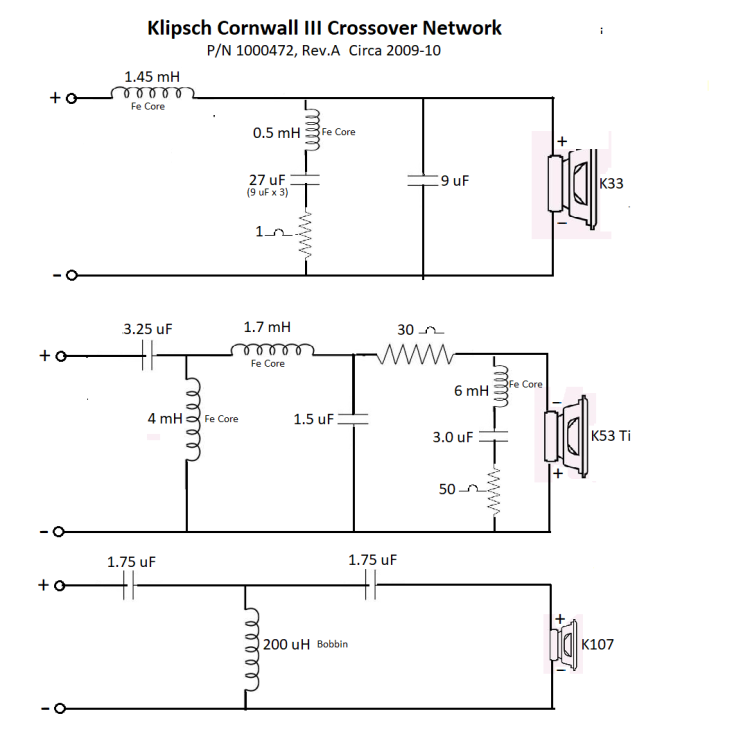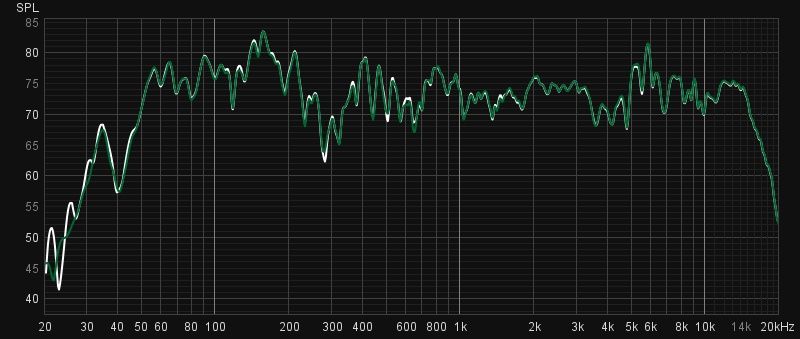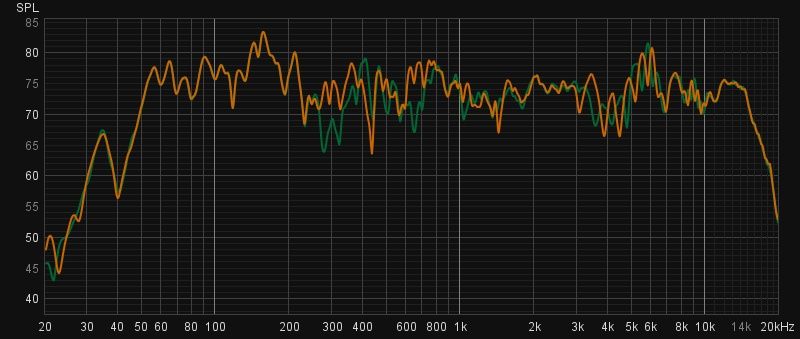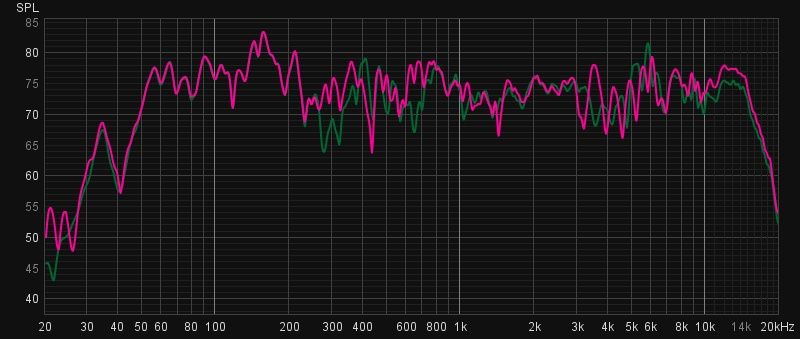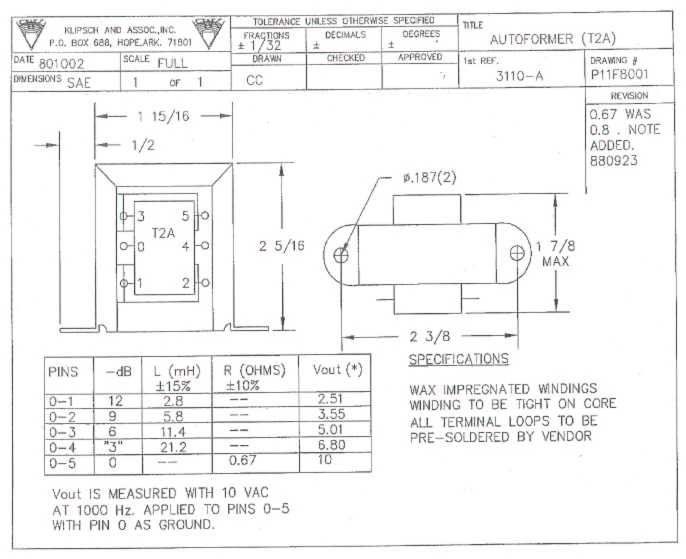
mboxler
Regulars-
Posts
574 -
Joined
-
Last visited
Content Type
Forums
Events
Gallery
Everything posted by mboxler
-
The Heresy I and II used autoformers. Klipsch went to series resistors starting with the Heresy III. The crossover in your Heresy IV is pretty complex. Are you asking if autoformer(s) could be used in those?
-
Yes you do. One of the few things ALK stated that I agree with is that the K33 looks like a 1mh inductor with a DCR of 6 ohms @400hz. What equation are you using? Here's an LTSpice simulation of an AK-3 woofer low pass as well as a REW voltage plot. Mike
-
If you are referring to the electrical cutoff, it's closer to 350hz on an AK3 Klipschorn. I imagine it's still close to that on a La Scala, but I'll measure the impedance of a K33 mounted in a La Scala later today to be sure. Mike
-
As is usually the case, the truth tends to be somewhere in the middle. To satisfy my curiosity, I ordered a pair of Altas PD-5VH's. Below are plots of a new PD-5VH (Blue) and an old K55V push pin (Orange). Both measurements start at 300hz on a K-400 horn with no filter. I'll let you decide the frequency responses of each driver. Again, the Altas driver is brand new. I don't know if the FR will change over time. Mike
-
After all that drama, I forgot to answer the other part of your question... 1) Either add a 10uf to 12uf capacitor in parallel with the main high pass capacitor, or replace it with a 12uf to 14uf. 2) Move the K55V to tap 4 of the T2A. 3) Move the K77M to tap 5 of the T2A. 4) Change the K55V and K77M polarities back to normal. 5) On the tweeter filter, add a parallel 245uf inductor and second 2uf capacitor. Please excuse my poor illustration 😀
-
-
I may be a party of one, but I find the AA with those drivers unlistenable. To start with, the K55M's FR extends flat to 6khz compared to the K55V, which starts fluctuating around 4.5khz. I believe that's a big reason why the AL has the steep 6khz high pass to the K77M. The AA's tweeter filter is really closer to a 5khz high pass, and somewhat equalized to blend with the K55V. With the AA, there is an overlap from around 4.5khz to 6khz that I found annoying. I know this because I built a pair of AA's and tested them on my AK-2 Khorns. Again, I may be alone on this, but since you asked 😎 Mike
-
I assume you have the K55M and K77M? For my own information, does the K77M mount flush with the back or the front of the motor board?
-
The 4uf capacitor may be too small to work properly with this last change but as always let your ears be the judge.
-
Yes leave the tweeter on tap 5. Squawker to tap 4. Unfortunately if you leave the back off you’ll loose some base. I’d put the back on with only 4-6 screws to ease the process.
-
We are all noobs one way or another. Yes, db is decibel. Perhaps the squawker dropped by more than I thought. The only other thing would be to move the squawker from tap 3 to tap 4 as well. Sorry. If I had Cornwall's I would try this myself before suggesting the changes. I know it's a pain to remove the back.
-
On the Type B crossover, the tweeter filter is connected to tap 4 (-3.35db, dotted line). Simply desolder that wire (which is connected to the 2uf tweeter capacitor), and solder it to tap 5 (-0db, bold line).
-
Moving the tweeter filter from tap 4 to tap 5 will increase the CT-125 voltage by 3.35db. It also drops the K-55 voltage by around 1db. I don't have a Cornwall to measure the actual SPL changes but it's an easy mod to try.
-
Actually, you have the Crites A-4500's to go along with your CT-125's. It would take some work to convert them to AA's. I like the CT-125's, but found the sensitivity to be too low for the Khorns. It's a great tweeter for the Cornwall or Heresy, if you make tap changes to bump up the voltage to them.
-
LaScala Questions about Crossovers and Drivers
mboxler replied to Trinity3's topic in Technical/Restorations
-
LaScala Questions about Crossovers and Drivers
mboxler replied to Trinity3's topic in Technical/Restorations
I thought it would be interesting to compare tweeter filters using a K77M. I've never measured a Type A before, so I compared the Type A (RED) with the Type AA (GREEN), and the Type AL/AK (BLUE). The A and AA cross around 4.5khz, while the AL/AK is around 6khz. The Type AL/AK filter does seem more suited to the extended response of the dual phase plug squawkers. -
LaScala Questions about Crossovers and Drivers
mboxler replied to Trinity3's topic in Technical/Restorations
That is really weird! They do look like solder lugs, but it appears someone tried to remove the solder "globs" for some reason. The + terminal has the normal red spot on the case, but the usual red mark on the solder "glob" is gone along with most of the glob 😕 -
Tap names are confusing. In the case of the 3636 and the 3916, X doesn't mark the same spot. Here's the T7A. The tap names are actually 0, 1, and 2 and the connections are in 0 - 2, out 0 - 1 (-10db). Like Dean said, the T7A in an inductor, and one end is labeled 0, the other end is labeled 2. Now imagine they are winding the inductor (call this end tap 0). When they reach 31.6% of the windings, they expose the wire and cut it. The two ends of this cut wire are tap 1. The rest of the wire is then directed back to the inductor and continues to be wound until 100% of the desired windings is reached (tap 2) If the same tap names were used on a T2A (0, 1, and 2), the output voltage would be around -3db due to the winding ratios. Mike
-
-
Here are the rest of my findings... One squawker gasket was missing, the other pretty compressed. New gaskets installed. Both AA tweeter inductors were secured with ferrous screws and measured 315uh. Replaced with non-ferrous and now both measure 265uh. One AA's woofer inductor measured 2mh, the other 2.5mh. Removed doghouse from one speaker. Woofer is K-33-E Square Magnet. Plots were made on just one speaker, as I wanted to see the how the crossovers measured. First, I was surprised how little the inductor difference made. White is 2.0mh crossover, green is 2.5mh crossover. Next I reversed the polarity of the squawker. Green is normal polarity, orange is reversed polarity. Next is a mod that I had to try out. I've always thought the AA tweeter filter peaked too soon, resulting in the SPL bump between 5khz and 6khz. I added a 4uf capacitor across the second 2uf of the tweeter filter and remeasured. It did decrease the bump by 4db, but it also extended the tweeter response (much flatter). Orange is 2uf, red is 6uf. Last is a comparison between the stock AA (Green) and the modded AA (Red). I plan on adding the notch filter to tame the 160hz bump, then I think I'm done! Mike
-
Is the distortion coming from one speaker or both? If it's just one, switch the cables on the amp side and see if the issue moves with the cable.
-
The inductance of the entire T2A is not listed, so just multiply the inductance between Taps 0-3 by four to get 45.6mH.
-
Send a PM to @Deang He may have a pair of new T2A's he could sell.
-
Not yet. I promised @archdukeobvious I'd do as little damage as possible and these things are heavy.


.png.794fd6c18eaaf3199d737c2e049a5355.png)

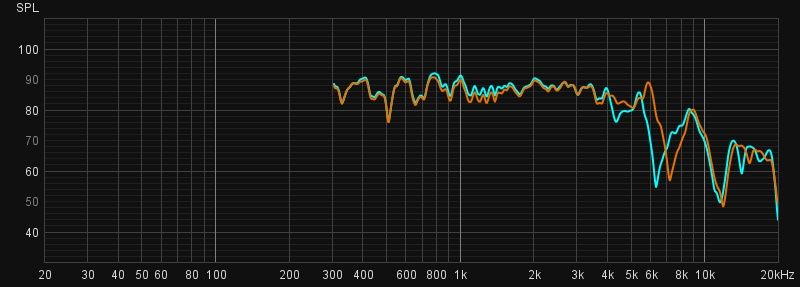
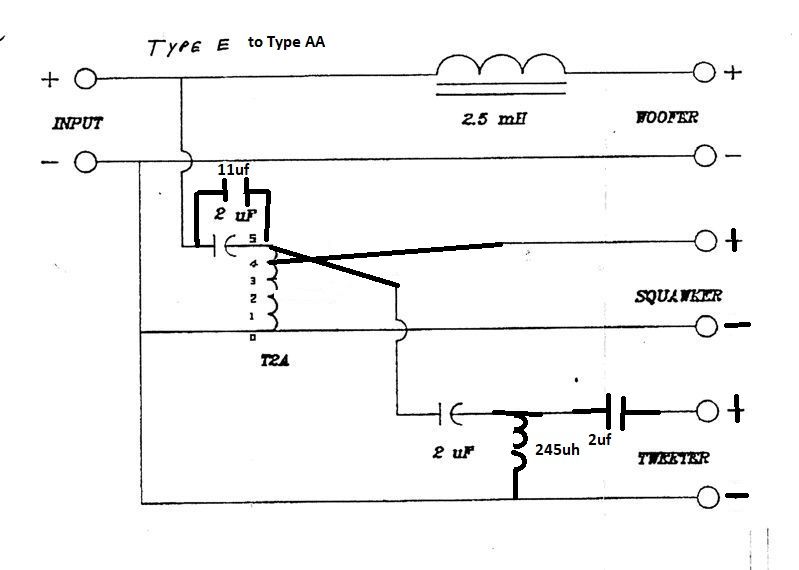


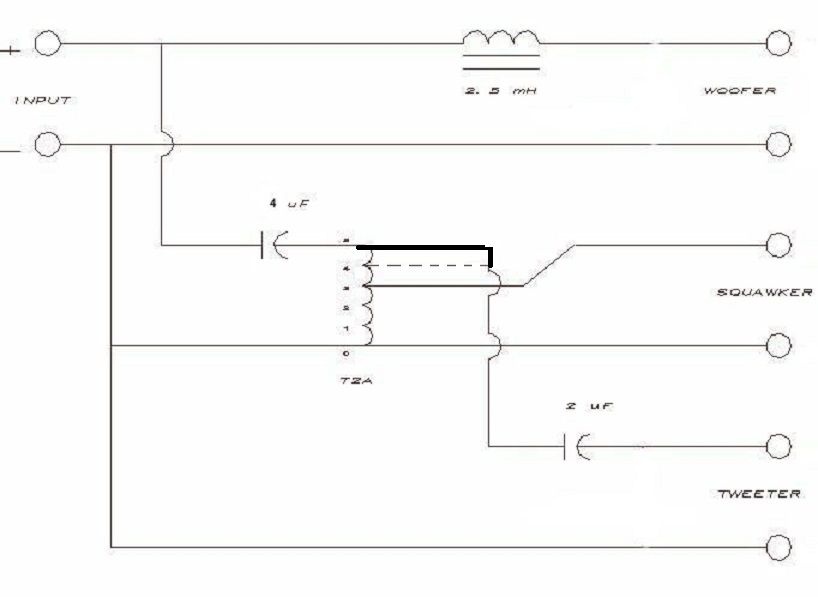
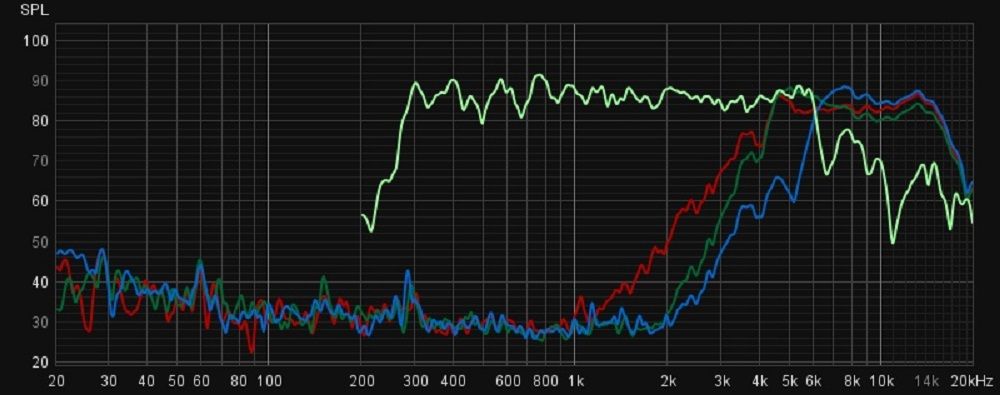
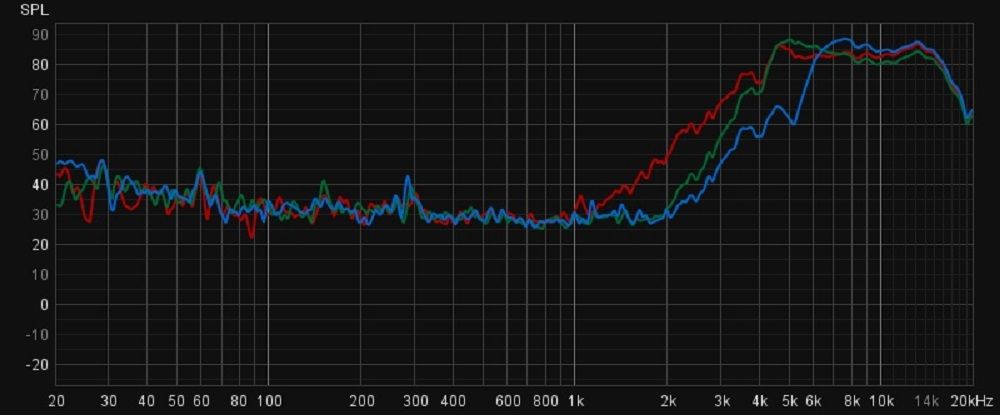
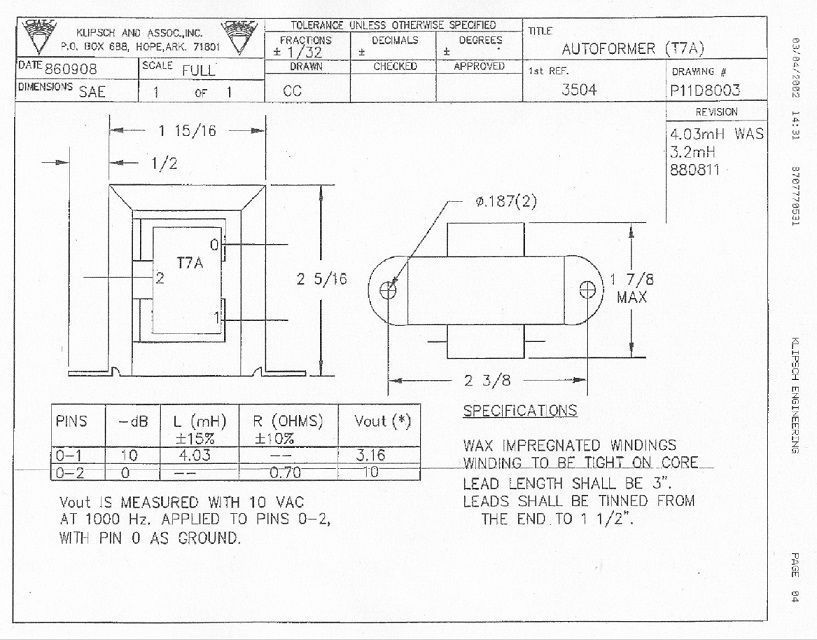
.thumb.png.ba2700b7d9947a0bc8b6f83397ad464a.png)
.thumb.png.a934b395ba88e004968f30b83b384982.png)

